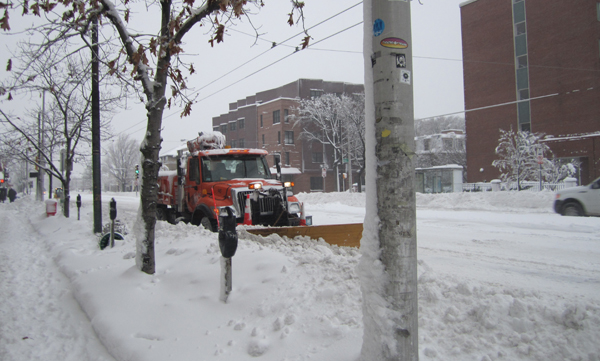
[Image above] Credit: Jillian C. York; Flickr CC BY-NC-SA 2.0
I may be sending some bad karma into the universe by writing this, but so far this winter, Columbus has experienced some fairly mild weather.
Last winter, however, was far from mild. The city experienced 56.4” of snow, making the winter of 2013–2014 the snowiest Columbus has seen since 1878.
(In all honesty, 56.4” is nothing. I hail from the snow capital of 2013–2014, Erie, Pa., and can vouch that though chilly-than-normal and snowier-than-expected, the Capital City’s winter was weak compared to the 138.4” Erie—and I—experienced in 2013 and every year previous.)
All that snow and ice last winter has resulted in a shortage of roadway salt for the winter that is to come, which means that the cost of the cold-weather commodity is up some 10–30%.
According to the Salt Institute, however, the cost of not using road salt is even higher. Following a one-day snowstorm, state economies can experience up to $700 million in losses from impassable roads.
To combat the cost of road salt—as well as its impact on our environment—one Washington State University researcher is busy cooking up greener ice-melting materials that use fewer chemicals.
Xianming Shi’s studies in “road ecology” at the university’s Center for Environmentally Sustainable Transportation in Cold Climates—the nation’s only center devoted to the impacts of environmentally friendly snow and ice control on our roads, wildlife, and streams—have shown that combatting Mother Nature’s frozen fury requires a great deal of “highly technical” science.
His smart snowplow comes with sensors that enable plows to use less salt.
“Ordinary snowplows have at least one sensor to measure pavement temperature,” says Shi in a WSU release. “Smart snowplows not only read temperature but also residual salt from previous applications, the presence of ice and the amount of friction on the road. All of these readings help operators apply less salt. In the past, it was all done visually. By the time you can see salt on the road, it’s way too much and is going into the vegetation and groundwater.”
In addition, his Maintenance Decision Support System, open-source software funded by the Federal Highway Administration, provides insight about road and weather conditions, salt supplies, and suggested application rates.
Shi is also at work improving upon beet and tomato juice de-icers, which are less corrosive but not as effective as their chemical counterparts, and on a de-icer-resistant concrete made with nano- and micro-sized particles that, according to the release, “doesn’t break down as quickly in the presence of salt and chemicals, thereby extending the life of roads and sidewalks.” Both have the potential to further assist government in making winter roadways safer and greener.
“To their credit, state and county agencies are doing a very difficult balancing act,” says Shi. “They have to look at safety first and sustainability second. On top of that, they have budget constraints. So I think research is crucial to help them out.”
What do you think of Shi’s research? If it were available, would you invest in a smart snowplow for your driveway?
Click here for a video from ACS Reactions that explains exactly how salt melts ice.
